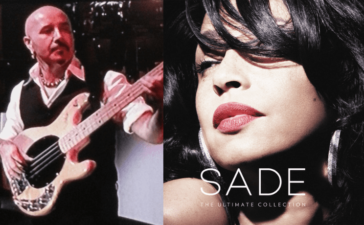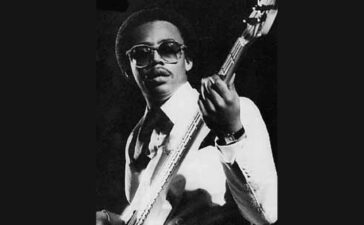Nick Fyffe’s bass work in Jamiroquai’s “Love Foolosophy” is a prime example of how a bass line can simultaneously anchor a track while enhancing its overall groove and feel. Released in 2001 on the album A Funk Odyssey, “Love Foolosophy” is a funky, disco-infused song that showcases Jamiroquai’s signature blend of funk, acid jazz, and electronic music. Fyffe’s bass playing on this track provides the rhythmic foundation that drives the song’s irresistible groove, while also injecting personality into the music through subtle melodic flourishes.
The Bass Line’s Role in the Song
“Love Foolosophy” is built around a funky rhythm section, and Fyffe’s bass line is at the heart of that groove. The bass has a lively, upbeat character, but it’s never overpowering. Fyffe uses a combination of syncopation and rhythmic precision to lock in with the drums, creating a tight groove that complements Jay Kay’s smooth vocals. The line itself is built around a repetitive, punchy pattern that uses slaps and pops to add texture, creating a rhythmic complexity that is essential to the track’s danceable vibe.
Melodic and Rhythmic Interplay
One of the defining features of Fyffe’s playing on “Love Foolosophy” is his ability to weave melodic elements into the rhythmic foundation. His bass line does more than just outline the chords; it dances around them, providing a counterpoint to the vocal melodies and the instrumentation. While the drums and guitar lay down a steady rhythm, Fyffe’s bass introduces playful variations and fills that elevate the groove, without ever straying too far from the core pulse of the song.
This interplay between melody and rhythm is a hallmark of Jamiroquai’s sound, and Fyffe’s playing is crucial in maintaining that balance. His line is fluid, moving between supporting the harmonic structure and driving the rhythmic momentum forward.
Technique and Tone
Nick Fyffe is known for his ability to combine technical proficiency with musicality, and “Love Foolosophy” is a great showcase of both. His slap bass technique, while not overly flashy, is precise and adds a bright, percussive quality to the track. The slaps are balanced with fingerstyle playing, which provides the song with its warm, full-bodied low-end. Fyffe’s tone is clean and defined, cutting through the mix just enough to be prominent but never overshadowing the other instruments.
The tone of Fyffe’s bass in this track is a blend of funk’s punchy attack and the smoothness of disco, reflecting the song’s hybrid genre. The result is a tone that feels tight and controlled but still maintains a natural groove.
Legacy and Influence
Nick Fyffe’s work on “Love Foolosophy” is often cited as one of the standout bass performances in Jamiroquai’s discography. As a member of the band from 1999 to 2003, Fyffe played a crucial role in maintaining the high standard of bass playing established by Jamiroquai’s original bassist, Stuart Zender. His contributions to tracks like “Love Foolosophy” demonstrated his ability to fit into the band’s established sound while bringing his own flair and technique to the table.
The bass line in “Love Foolosophy” is a textbook example of how funk bass should be played: tight, groovy, and full of character. It’s a part of what makes the track so beloved by fans and continues to be an inspiration for bassists who want to understand how to build a groove that’s both solid and engaging.
Conclusion
Nick Fyffe’s bass line in “Love Foolosophy” stands as a key element of the song’s enduring appeal. His blend of rhythmic precision, melodic creativity, and technical skill makes this track a standout example of modern funk bass playing. Whether you’re a musician or just a lover of great music, Fyffe’s contribution to this track is something that can be appreciated for its artistry and the way it drives the song forward.









